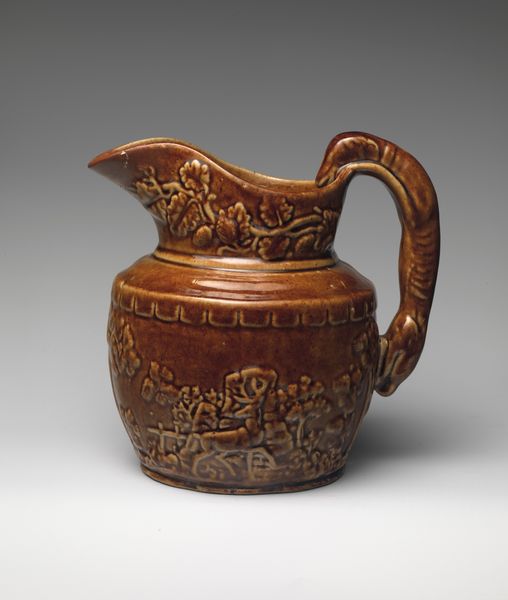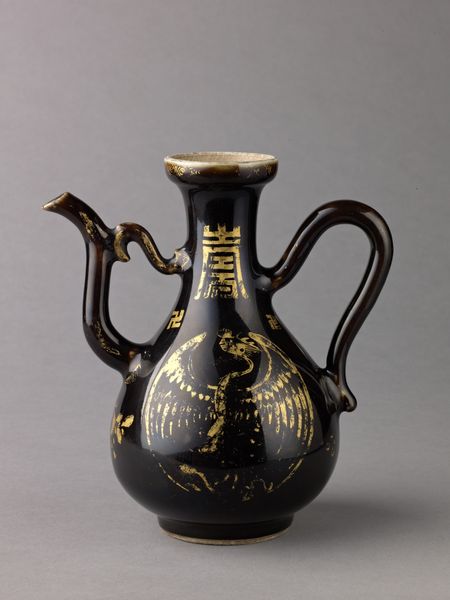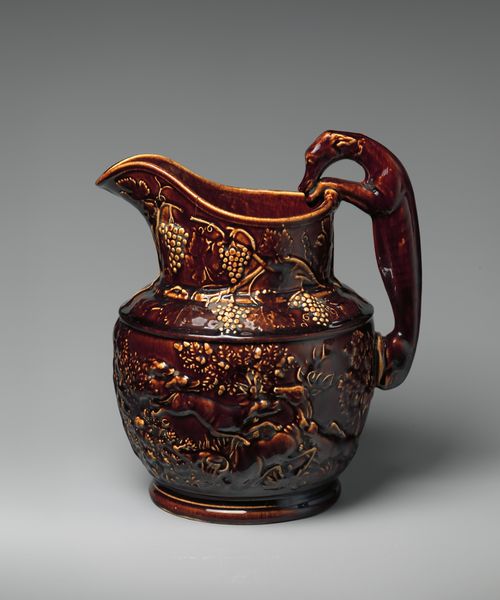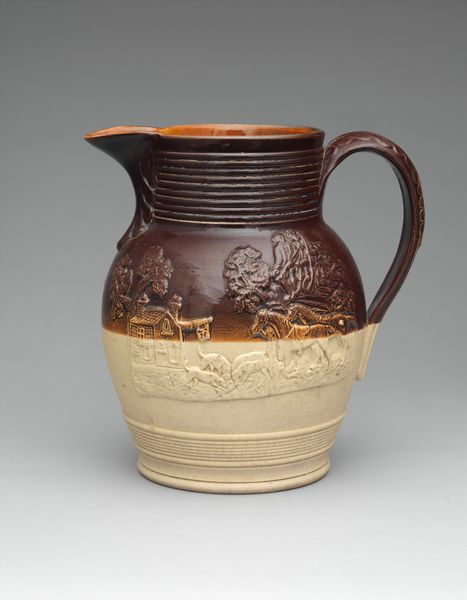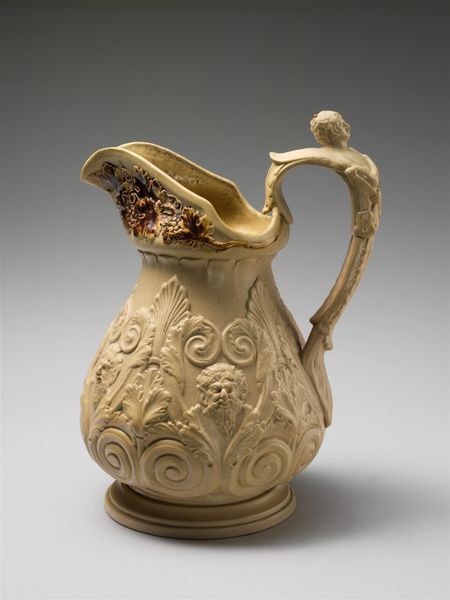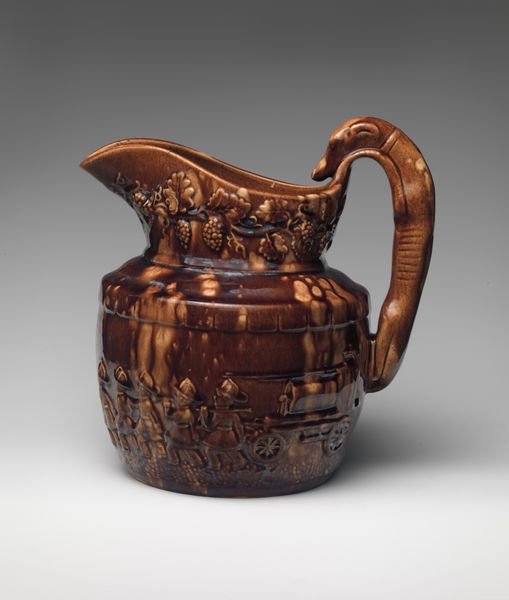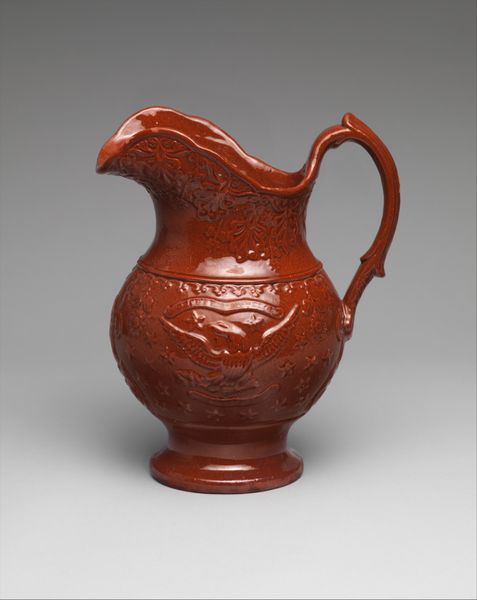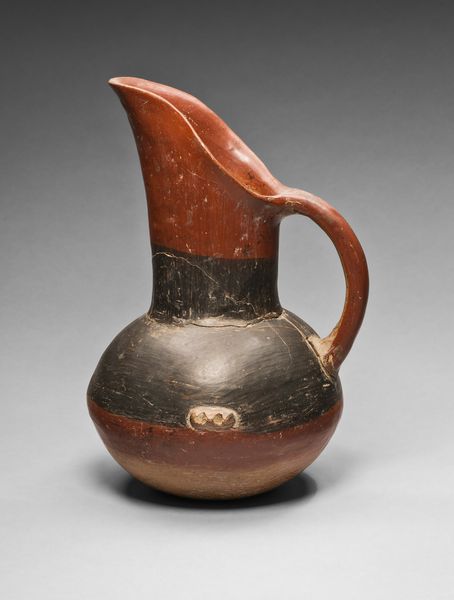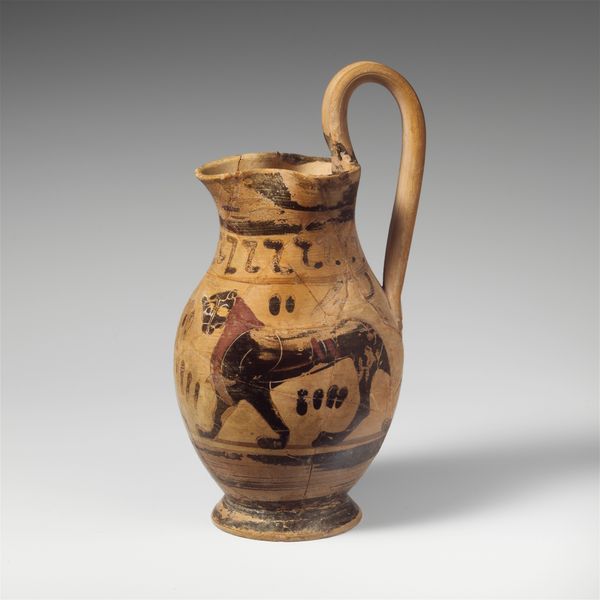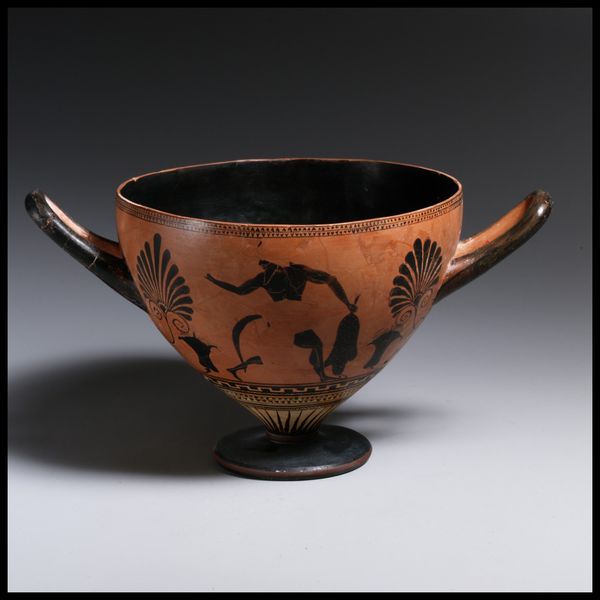
relief, ceramic, earthenware, sculpture
#
relief
#
ceramic
#
earthenware
#
stoneware
#
geometric
#
sculpture
#
united-states
Dimensions: 7 3/4 in. (19.7 cm)
Copyright: Public Domain
Curator: This beautiful ceramic pitcher, currently residing here at the Metropolitan Museum of Art, was crafted by Salamander Works sometime between 1836 and 1850. Notice the detailed relief work. Editor: It makes me think of pirate adventures! Or maybe very refined, very civilized, afternoon tea, on a ship, for pirates. The color gives it such a dark, chocolatey feel. Curator: Indeed. That chocolate hue arises from the earthenware, a common medium in American ceramics of this period, and its significance touches upon burgeoning industries and global trade. Editor: And look at those little ships! It feels like someone’s tiny history book made three-dimensional and stuck on a… well, on a jug! Does this tell a story about something specific? Curator: It could represent the contemporary maritime interests of the United States or even the growing industrial prowess reflected in steam-powered vessels. But beyond specific narratives, consider what it meant for art and labor to intersect so directly at this moment. Editor: Right. I'm curious, because its surface seems like something that would exist inside a parlor rather than be lugged around on an actual ship. I can also imagine it reflecting the light from the fire on a mantle place—not exactly seafaring conditions! Curator: Well, positioning the work this way lets us consider how seemingly quotidian items became implicated in constructions of class, status, and even national identity. To possess such an object was, for some, to broadcast one's engagement with these rising national industries. Editor: Oh, so you’re saying owning a nice pitcher became some kind of early statement of wealth. Curator: In a sense, yes. Also, consider its placement within larger narratives of craftsmanship, the role of ceramics in American decorative arts, and what stories it silently whispers about power and aspiration in the antebellum period. Editor: I like that. It went from pirate ship on the mantelpiece to the parlor games of early industrial capitalism. I like the journey and that even something so small and beautiful as a simple water pitcher can show how those pieces still shape us today.
Comments
No comments
Be the first to comment and join the conversation on the ultimate creative platform.
